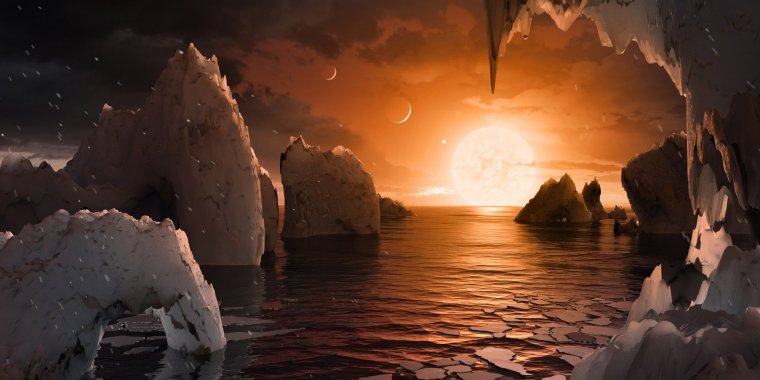| News / Space News |
NASA Telescope Reveals Largest Batch of Earth-Size, Habitable-Zone Planets Around Single Star
NASA's Spitzer Space Telescope has revealed the first known system of seven Earth-size planets around a single star. Three of these planets are firmly located in the habitable zone, the area around the parent star where a rocky planet is most likely to have liquid water.

Imagine standing on the surface of the exoplanet TRAPPIST-1f (artist's concept). ![]()
The discovery sets a new record for greatest number of habitable-zone planets found around a single star outside our solar system.
All of these seven planets could have liquid water -- key to life as we know it -- under the right atmospheric conditions, but the chances are highest with the three in the habitable zone.
At about 40 light-years (235 trillion miles) from Earth, the system of planets is relatively close to us, in the constellation Aquarius. Because they are located outside of our solar system, these planets are scientifically known as exoplanets.
This exoplanet system is called TRAPPIST-1, named for The Transiting Planets and Planetesimals Small Telescope (TRAPPIST) in Chile. In May 2016, researchers using TRAPPIST announced they had discovered three planets in the system.
Assisted by several ground-based telescopes, including the European Southern Observatory's Very Large Telescope, Spitzer confirmed the existence of two of these planets and discovered five additional ones, increasing the number of known planets in the system to seven.
Using Spitzer data, the team precisely measured the sizes of the seven planets and developed first estimates of the masses of six of them, allowing their density to be estimated.
Based on their densities, all of the TRAPPIST-1 planets are likely to be rocky. Further observations will not only help determine whether they are rich in water, but also possibly reveal whether any could have liquid water on their surfaces.
The mass of the seventh and farthest exoplanet has not yet been estimated -- scientists believe it could be an icy, "snowball-like" world, but further observations are needed. (NASA)
YOU MAY ALSO LIKE

